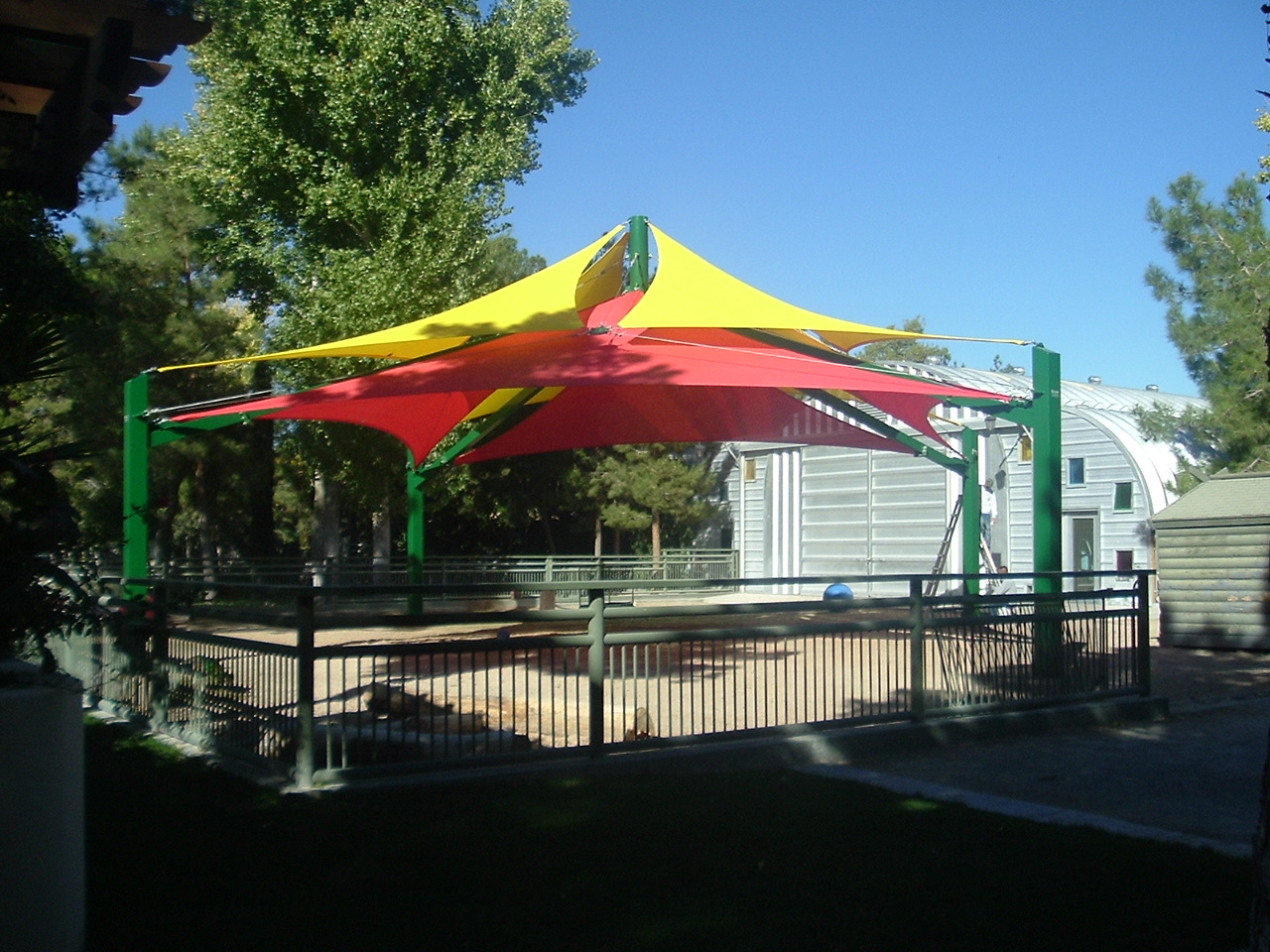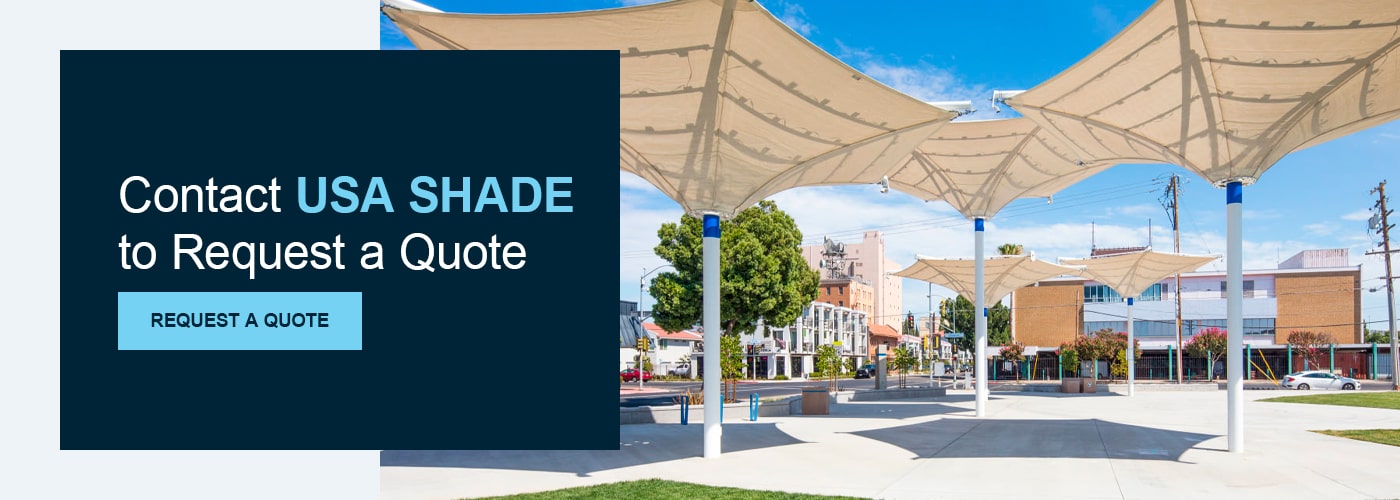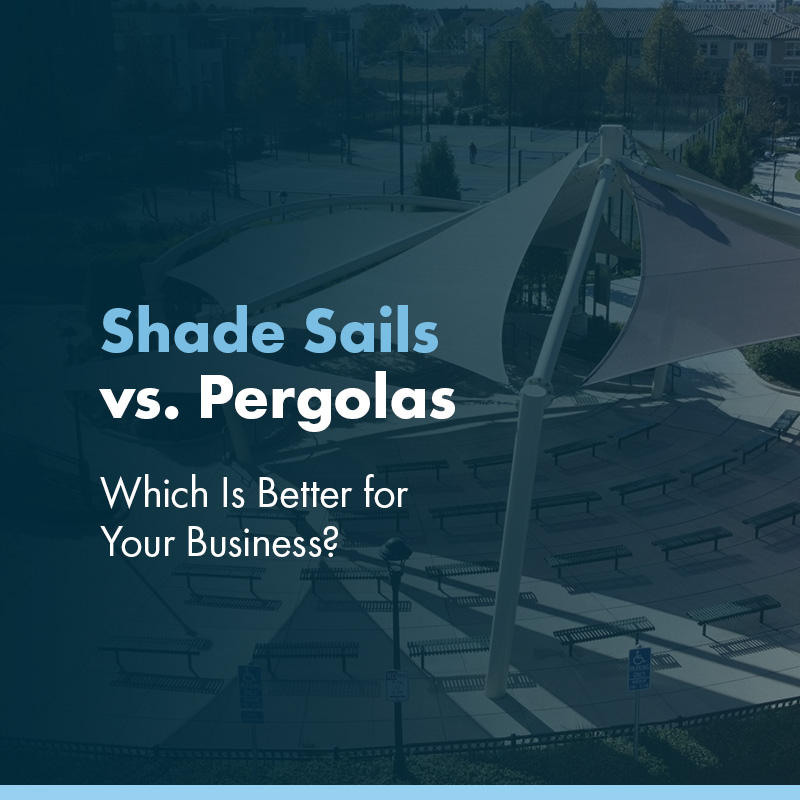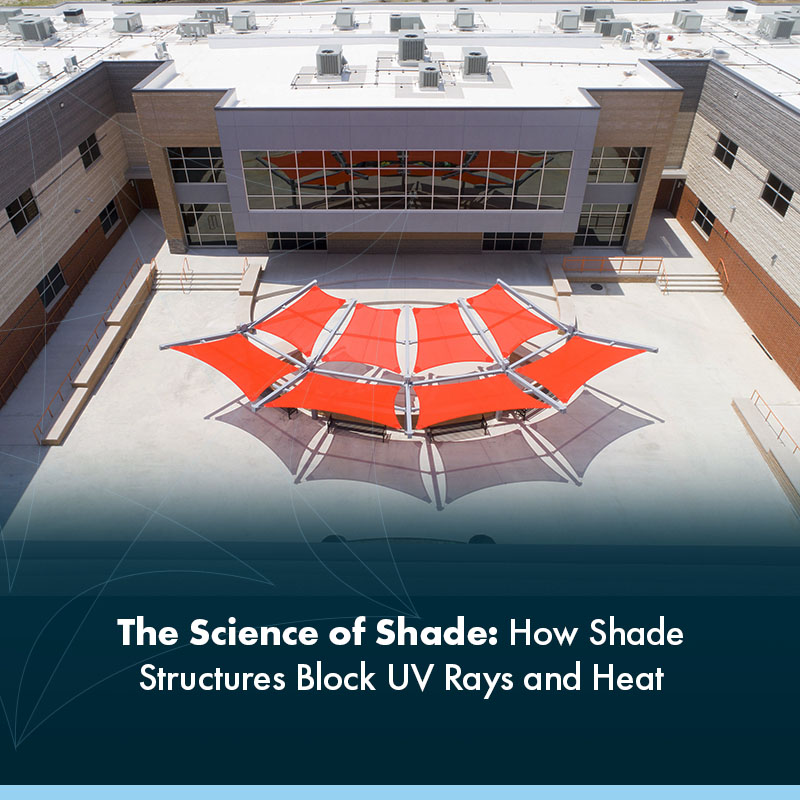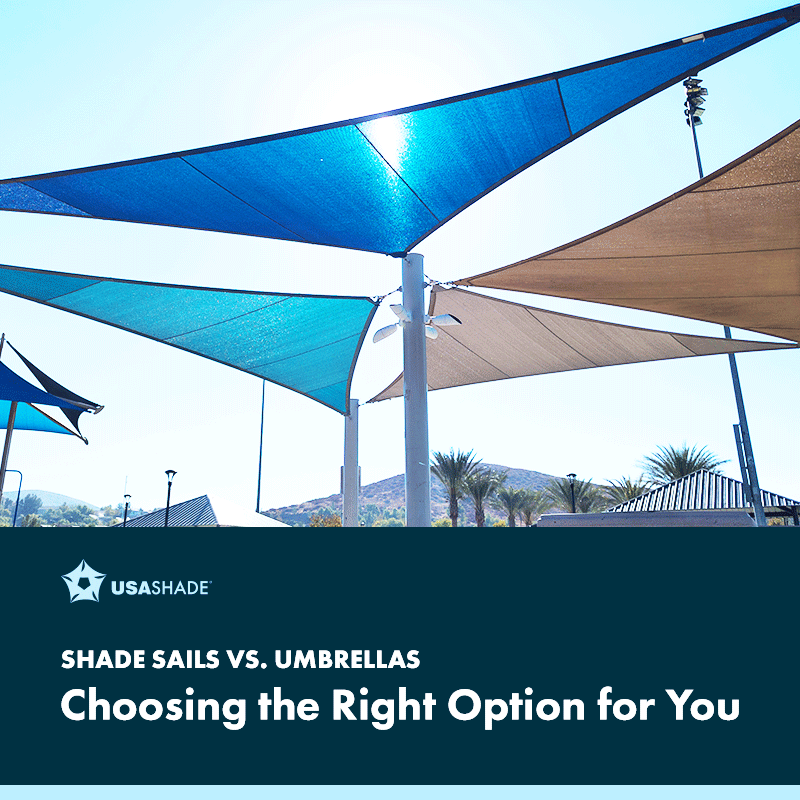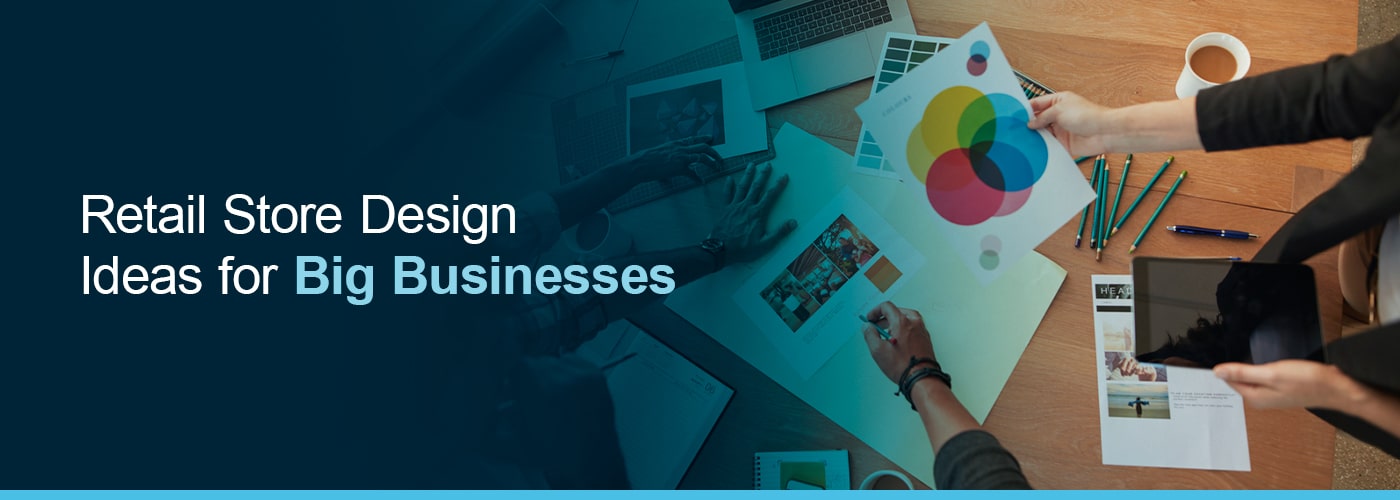
The design of your store plays a pivotal role in capturing customers’ attention, fostering a memorable shopping experience and driving sales. A strategic and well-executed store design is important for businesses looking to make a lasting impact. Your store’s design should seamlessly blend functionality, aesthetics and brand identity to create a cohesive and compelling space that resonates with your target audience. Each design element should be carefully considered to align with your business goals and customer preferences.
By implementing innovative retail store design ideas, your store can enhance the customer journey and create a distinct brand experience that sets your business apart from the competition. Whether your company operates in fashion, electronics, home decor or any other retail sector, these ideas can be adapted to suit your specific industry and target audience.
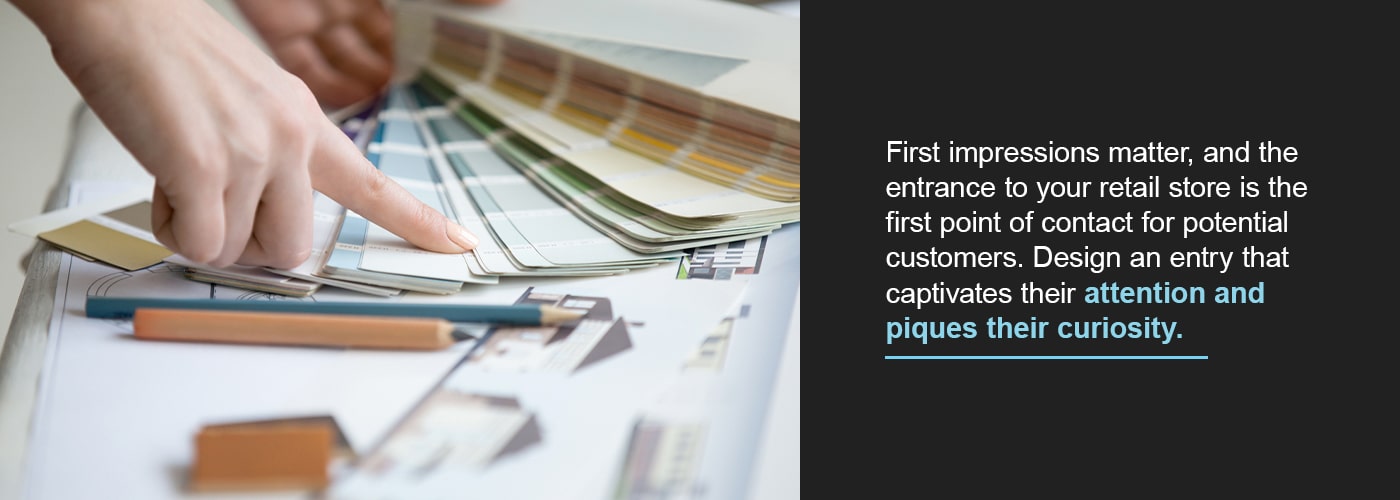
Interior Design
A successful design idea for big retail stores is to create an environment that reflects your brand, engages customers and influences their purchase decisions. Regularly evaluate your store layout, display arrangements and overall design to ensure they align with changing customer preferences and industry trends.
First impressions matter, and the entrance to your retail store is the first point of contact for potential customers. Design an entry that captivates their attention and piques their curiosity. Use an attractive storefront display to showcase your best products or exclusive offers. Employ eye-catching signage and lighting to create a welcoming atmosphere that beckons customers to step inside and explore further.
Here are some strategies for improving your store’s overall interior design:
- Positioning products and promotions: Strategically position high-demand or high-margin items at eye level and within easy reach. Utilize well-designed product displays, shelves and fixtures to highlight your best offerings. Cleverly arranged visual merchandising can create a sense of urgency and encourage impulse buying.
- Utilizing colors and themes: Themes and colors can evoke emotions and create a cohesive brand experience within your retail space. Choose colors that align with your brand identity and product offerings. Consider the psychological impact of different colors — warm hues like red and orange can stimulate appetite and impulse buying, while cool colors like blue and green create a sense of calmness and relaxation.


Signage
When customers enter your store’s entrance, well-designed signs can be beacons of information, swiftly directing them to desired products. Use typography, colors and graphics that resonate with your target audience. A clear welcome sign sets a positive tone and signals customers they are in the right place. You can also use the following signs:
- Directional signage: Directional signage guides customers to amenities like escalators, elevators, restrooms and customer service stations.
- Department and category signage: Help customers find products or departments through prominent department and category signage. Organize departments logically and label them with concise and descriptive signs.
- Product promotion signage: Eye-catching signage can be a powerful tool for showcasing product promotions and enticing customers to purchase. Highlight discounts, limited-time offers or exclusive deals with visually appealing signage.
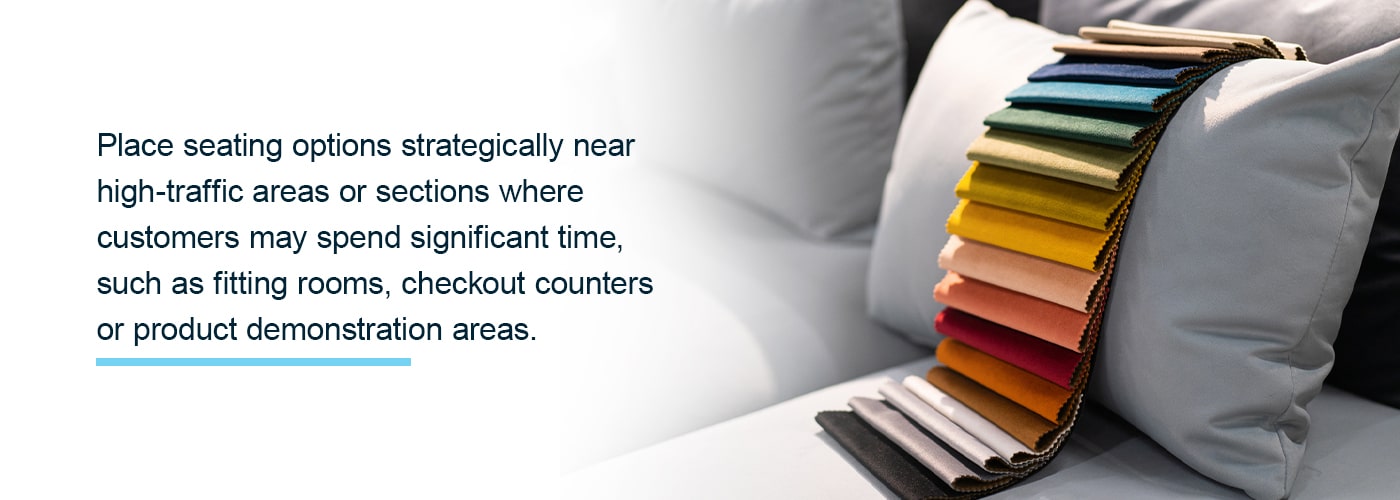
Store Layout
Different store layouts offer distinct advantages and cater to various types of merchandise, customer preferences and overall store atmosphere. Evaluate the pros and cons of each layout option, and regularly assess and adjust your store layout as consumer behavior and industry trends evolve.
Here are some different types of store layouts:
- Grid layout: This layout is characterized by its parallel rows of shelving, allowing customers to navigate the store easily. The grid layout works particularly well for stores with a large inventory and a wide range of product categories, such as supermarkets or convenience stores. Its symmetrical arrangement and clear sightlines make it convenient for customers to locate items and compare prices.
- Herringbone layout: The herringbone layout, also known as the diagonal layout, is an alternative to the grid layout that adds visual interest and encourages exploration. Aisles are positioned diagonally in this layout, intersecting at various points, creating a more dynamic and visually appealing shopping environment. By breaking the traditional linear flow, this layout can increase dwell time and encourage customers to explore different store sections. It is often utilized in clothing boutiques, specialty stores and home decor shops.
- Loop layout: The loop layout, also called a racetrack or circular layout, guides customers along a defined pathway that forms a loop around the store. The loop layout effectively maximizes exposure to merchandise and promotes impulse buying. It is commonly used in large department stores or home improvement centers where there is a desire to showcase a diverse product offering and encourage customers to explore different sections.
- Free flow layout: The free flow layout breaks away from traditional aisle-based designs and embraces a more open and flexible approach. It allows for creative arrangements of displays, fixtures and focal points to create distinct zones or vignettes within the store. It requires careful planning to ensure that customers can navigate the space comfortably and that products are effectively showcased.
Lighting
Lighting is an element of retail store design that goes beyond mere visibility. It sets the mood, highlights products and influences customer behavior and perception. Well-planned and thoughtfully executed lighting can create an inviting environment.
The first step in utilizing lighting effectively is establishing your store’s desired ambiance. Consider the atmosphere you want to create, aligning it with your brand identity and target customers. Different lighting techniques — such as warm or cool lighting, dimming capabilities, or color-changing options — can evoke specific emotions and set the desired tone. For example, warm and soft lighting can create a cozy and intimate ambiance in a boutique, while bright and vibrant lighting can energize a fast-paced fashion store.
LED lighting has become the preferred choice for retail stores due to its energy efficiency and versatility. LED lights consume less energy, generate less heat and have a longer life span than traditional lighting options. Additionally, LED lights can be dimmed or controlled to adapt to different lighting needs and moods, allowing for further customization and energy optimization.

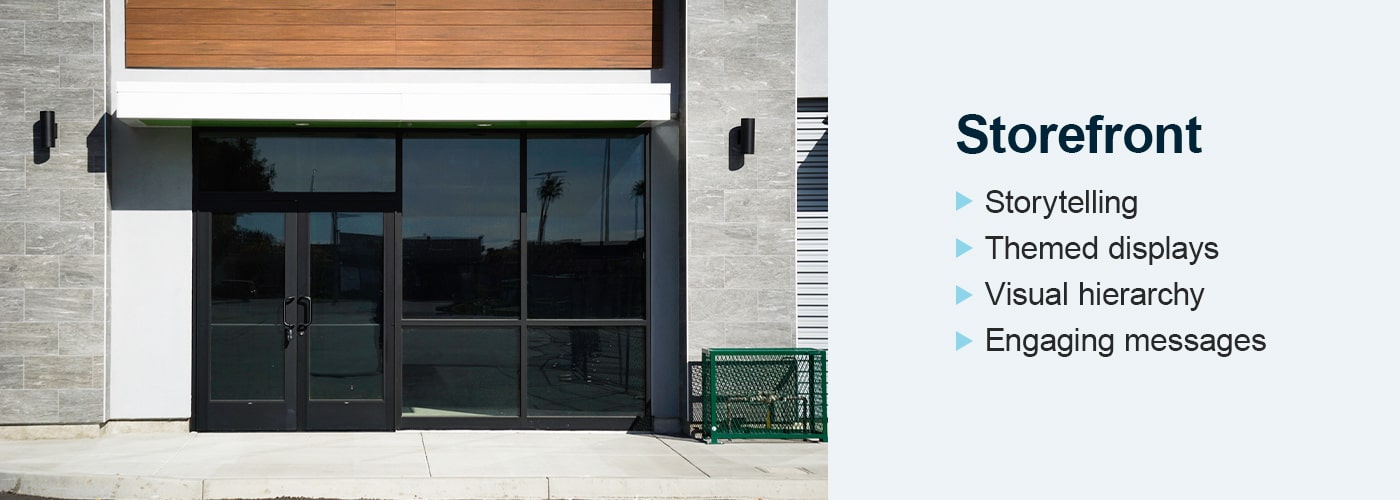
Seating
Integrating seating areas in your retail store offers customers a chance to take a break from browsing to recharge their energy. Place seating options strategically near high-traffic areas or sections where customers may spend significant time, such as fitting rooms, checkout counters or product demonstration areas.
Consider your target audience’s diverse needs and preferences when selecting seating options. Incorporate a mix of seating styles, including chairs with armrests for older adults or those who may require extra support and seating options suitable for families with children. By catering to various demographics, you create an inclusive environment that caters to the comfort and needs of all customers.
Self-Checkout
Self-checkout systems have revolutionized the retail industry, offering convenience, efficiency and enhanced customer control over shopping. With self-checkout, customers can scan and pay for their purchases independently, reducing wait times and human interaction, which may be appealing to shy customers.
Since customers handle their items and payment processes personally, they have greater control over their personal information, reducing the risk of mishandling sensitive data. Moreover, self-checkout systems often incorporate security measures, such as weight sensors or barcode verification, to prevent theft and ensure accurate scanning and payment.
When implementing self-checkout systems, provide clear instructions and user-friendly interfaces. Display visual cues and signage to guide customers through the self-checkout process, ensuring it is intuitive and straightforward. Regularly assess the functionality of the self-checkout systems and provide staff assistance nearby for customers who may require guidance or encounter any issues.
In-Store Branding
Consistent branding throughout your store is a powerful way to communicate your brand’s values, personality and story. Consistency in visual elements reinforces your brand identity. Begin by integrating your brand’s color scheme and logo in prominent locations, such as entrance areas, signage and displays.
Here are some more ways to emphasize your store’s values through branding:
- Engaging brand storytelling: Your retail store provides an opportunity to tell your brand’s story to customers. Incorporate storytelling elements that evoke emotion and connect with your target audience. For example, you could display images or videos that showcase the craftsmanship behind your products, the communities you support or the sustainable practices your brand upholds.
- Employee branding: Your employees are ambassadors of your brand and can significantly contribute to the overall brand experience within your store. Ensure your staff members embody your brand’s values and know your products. Equip them with branded attire, such as uniforms or name tags, that align with your brand’s visual identity. Additionally, invest in training programs that emphasize brand messaging, customer service and brand values, enabling your employees to consistently deliver a cohesive brand experience to customers.
- Branding touchpoints: Identify key touchpoints throughout your store where you can incorporate branding elements. Touchpoints can include product packaging, shopping bags, receipts or even scents that align with your brand’s identity. Consistency in these details reinforces brand recall and fosters a sense of authenticity.
Exterior Design
The exterior design of your retail store serves as the first impression for potential customers, enticing them to step inside and explore what you have to offer. Investing in a well-designed exterior can create an inviting and memorable experience that sets the stage for a positive customer journey.

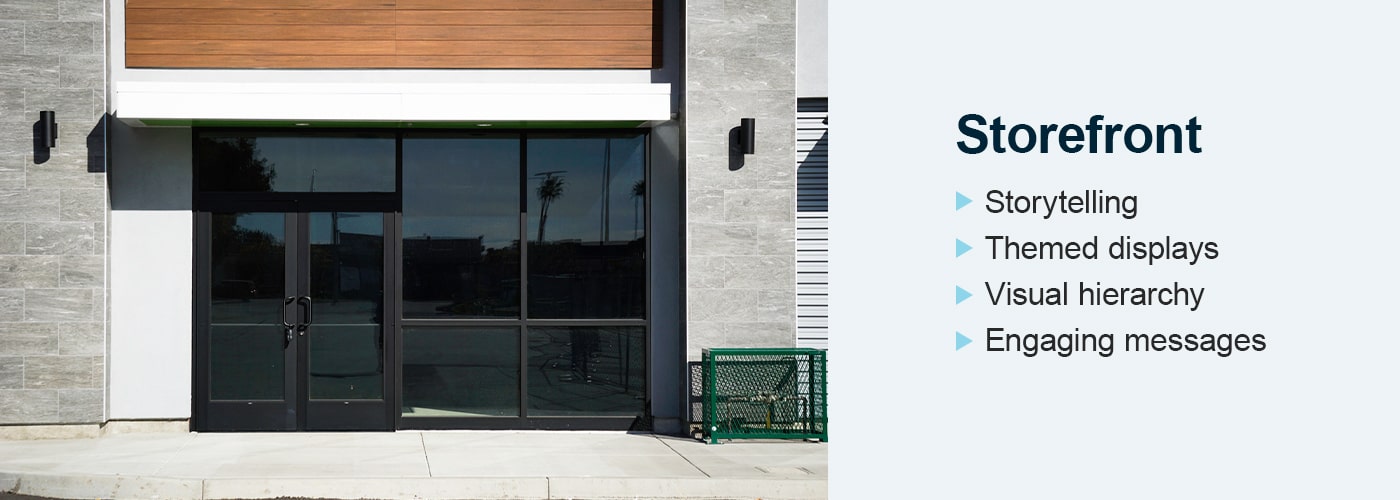
Storefront
Your storefront is the face of your retail store and should reflect your brand’s identity while capturing the attention of passersby. Consider a visually striking storefront design that stands out among neighboring businesses. Incorporate your brand’s logo, colors and signage in a way that is clear, prominent and easy to read from a distance.
Window displays are like the gateway to your retail store, providing a glimpse into the world you have to offer. To create captivating window displays, consider the following:
- Storytelling: Craft a visual narrative that reflects your brand’s story, values and the lifestyle associated with your products.
- Themed displays: Align your window displays with relevant seasons, holidays or special promotions to generate excitement and capture the attention of passersby.
- Visual hierarchy: Strategically arrange your products in the display to guide the viewer’s eye. Highlight featured items, new arrivals or bestsellers to create focal points that draw attention and entice customers to enter your store.
- Engaging messages: Use concise and impactful phrases to communicate unique selling points, special offers or the value proposition of your products.
Clearly Marked Doorways
Ensure that your entrance and doorways are clearly marked and easily identifiable. Clear and well-placed signage directing customers to the entrance can enhance convenience and prevent confusion. Use branded signage, including your logo or tagline, to reinforce your brand identity and make your entrance recognizable.
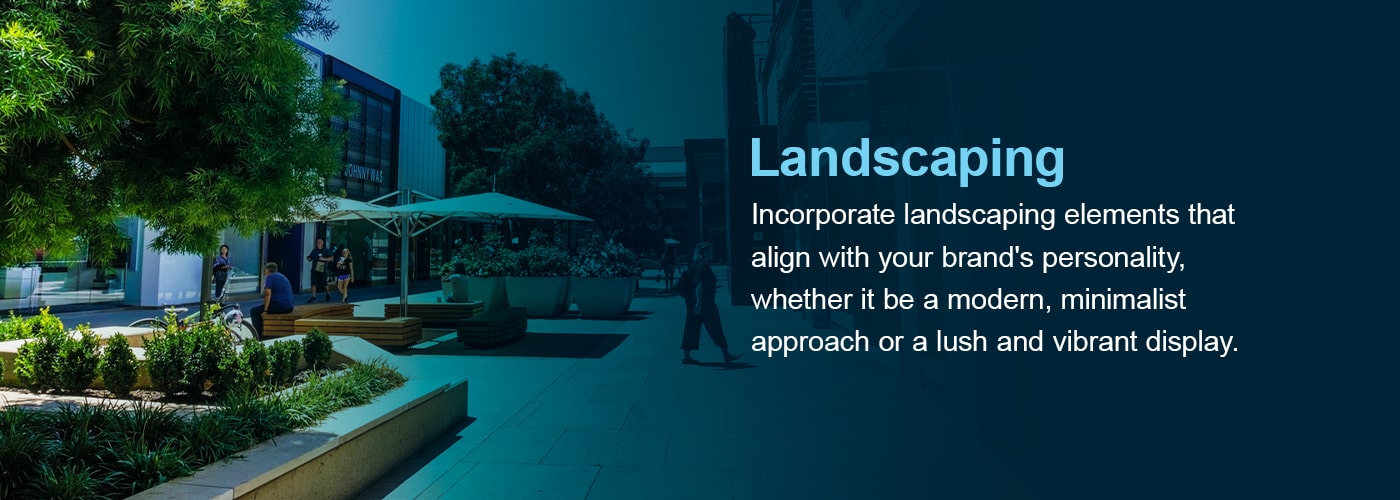
Landscaping
Thoughtfully designed greenery, flowers and shrubs can add a touch of natural beauty and create a welcoming ambiance. Incorporate landscaping elements that align with your brand’s personality, whether it be a modern, minimalist approach or a lush and vibrant display. Consider the following aspects of landscaping:
- Curb appeal: A well-maintained and attractive landscape instantly grabs the attention of passersby and entices them to explore your store. Add colorful flowers, neatly trimmed hedges and eye-catching plant arrangements near the entrance to create a positive first impression.
- Green spaces: Introducing green spaces within your retail store premises offers several benefits. Trees and lush foliage provide shade, reducing heat and creating a more comfortable environment for customers. Additionally, greenery adds a sense of tranquility and natural beauty, promoting a relaxing atmosphere for shoppers.
- Pathways and walkways: Guide customers through your outdoor space, leading them to entrances, seating areas or specific points of interest. Use materials like pavers, decorative stones or concrete to create visually appealing, durable walkways that seamlessly blend with the overall design theme.
- Seasonal changes: Landscaping allows one to reflect the changing seasons and create a dynamic environment. Consider using seasonal flowers and plants to introduce vibrant colors and textures that align with the time of year. Changes according to season can create a fresh and inviting atmosphere that keeps customers engaged throughout the year.
Outdoor Seating
Outdoor seating offers a place for customers to rest and relax and creates a welcoming atmosphere that encourages passersby to stop and spend time in your store. Choose seating styles that align with your brand’s image and the overall design aesthetic of your exterior.
Outdoor seating is a valuable addition to any retail store, providing customers with a comfortable and inviting space to relax, socialize and enjoy the outdoor ambiance. The following are considerations and benefits of outdoor seating:
- Enhancing customer experience: Outdoor seating offers customers a refreshing change of environment from the confines of indoor shopping. It allows them to take a break, unwind and recharge while enjoying the surrounding scenery.
- Design and comfort: When selecting outdoor seating furniture, prioritize design and comfort. Choose durable, weather-resistant materials that can withstand various environmental conditions.
- Location and layout: Carefully plan the location and layout of your outdoor seating area. Ideally, it should be easily accessible from the store entrance and positioned in a visually appealing area with suitable views and a sense of privacy.
- Shade and protection: Consider incorporating shade structures in your outdoor seating area to protect from direct sunlight, rain or other weather elements.
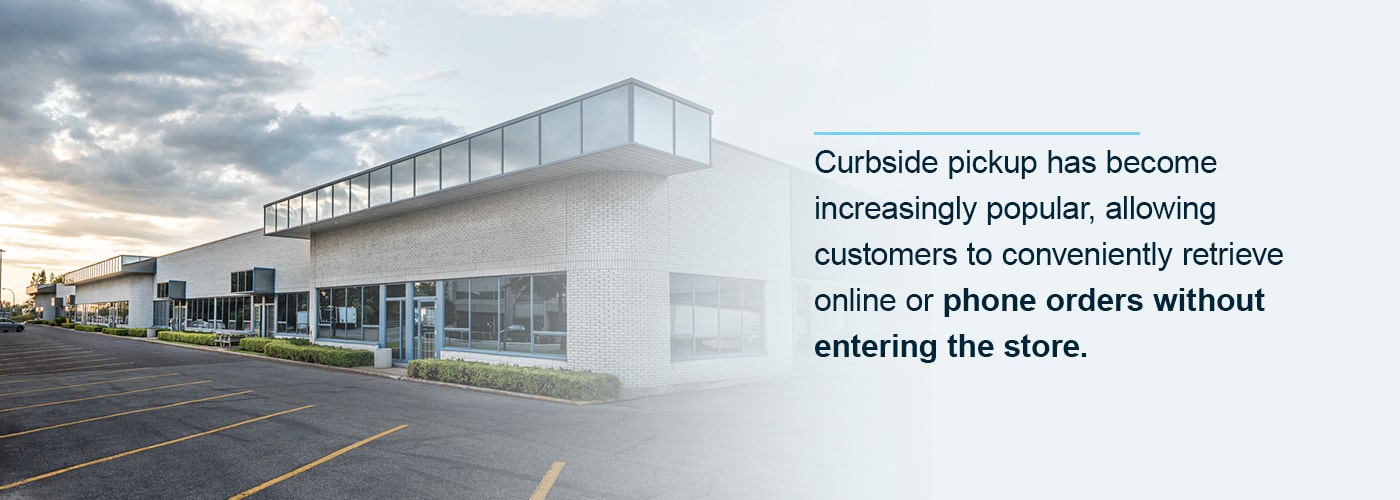
Covered Curbside Pickup Spaces and Parking Spaces
Offering covered curbside pickup spaces and well-designed parking areas can significantly enhance customer convenience and accessibility. Curbside pickup has become increasingly popular, allowing customers to conveniently retrieve online or phone orders without entering the store. By incorporating covered curbside pickup spaces, you can protect your company’s customers, employees and assets from the elements and create a seamless customer experience. Consider the following aspects:
- Dedicated spaces: Designate specific parking spaces near the entrance of your store as dedicated curbside pickup spots. Mark these spaces with signage or pavement markings, ensuring they are easily identifiable to customers.
- Shade structures: Install a durable shade structure to cover the curbside pickup area. Shade structures protect customers from wind and extreme heat, ensuring a comfortable and convenient pickup experience even in unfavorable weather conditions.
Well-designed parking areas make it easier for customers to visit your store and enhance their shopping experience. Ensure you have sufficient parking spaces to accommodate your customer’s needs, especially during peak hours. Monitor and adjust the number of parking spots based on customer demand to avoid overcrowding or scarcity. The following should be considered when designing your parking lot:
- Marked spaces: Use visible paint or pavement markings to designate accessible parking spaces for customers with disabilities. Display signage indicating reserved areas, such as “Expectant Mothers” or “Senior Citizens,” to cater to specific customer needs.
- Lighting and security: Install proper lighting in the parking area to enhance visibility and ensure customer safety, particularly during evening hours. Implement security measures such as surveillance cameras or security patrols to give customers a sense of safety and confidence while parking their vehicles.
- Accessibility and proximity to entrances: Consider the proximity of parking spaces to store entries, particularly for customers with mobility needs or those carrying heavy purchases.
- Clear traffic flow: Design the parking area to promote smooth traffic flow and minimize congestion. Clearly mark driving lanes, one-way directions and pedestrian crossings to ensure the safety of both drivers and pedestrians.
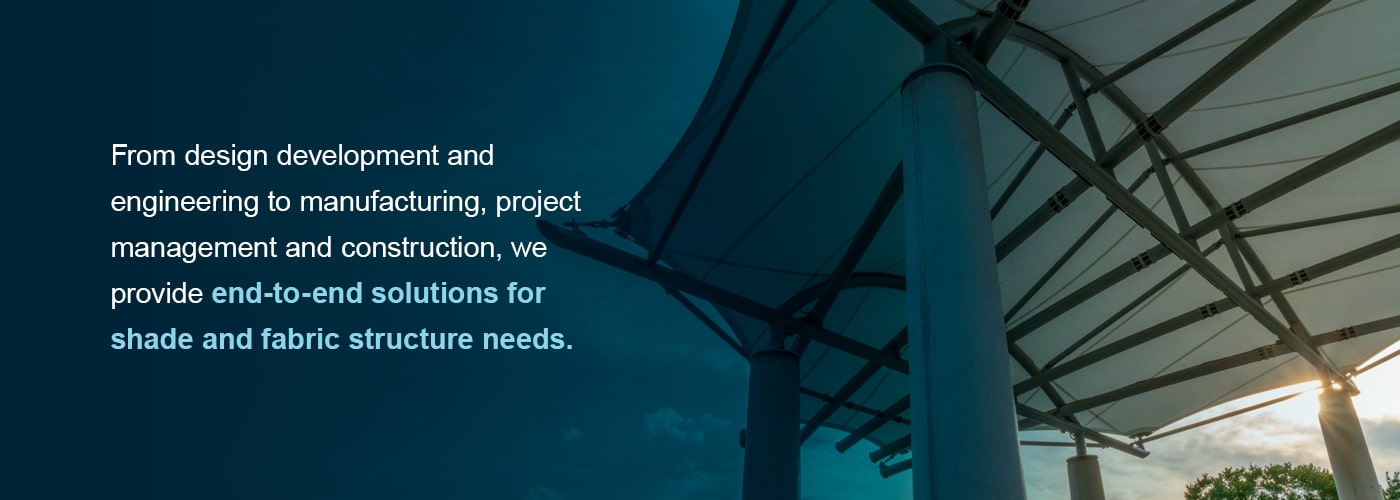
USA SHADE Will Help You Enhance Your Retail Store Exterior
When designing an exceptional retail space, partnering with industry leaders specializing in creating stunning outdoor spaces is essential. With over 25 years of experience, USA SHADE has established itself as the proven leader in fabric structure design and technology.
USA SHADE offers comprehensive resources that lead to successful projects and lasting partnerships. From design development and engineering to manufacturing, project management and construction, we provide end-to-end solutions for shade and fabric structure needs. Our in-house experts ensure seamless coordination and execution, delivering exceptional results tailored to your company’s requirements.
Our shade and fabric structures provide functional benefits and add an aesthetic appeal to your outdoor spaces. Whether covering outdoor seating areas, walkways or parking spaces, our structures enhance customer comfort, promote longer stays and create a memorable experience for visitors.
Our commercial waterproof shade structures are designed to offer outstanding features and numerous benefits for various applications. When you choose our products, your store can expect:
- Versatile fabric options: Our shade structures come in a range of fire-resistant fabric options, allowing your store to prioritize comfort while maintaining aesthetic appeal. You’ll have color choices, weights and textures to perfectly complement your space.
- Longevity and durability: With a life span of 15 to over 25 years, our shade structures are built to withstand the test of time. We use the highest quality waterproof fabric available, ensuring optimal performance even in challenging weather conditions.
- Low maintenance: The fabric is designed to resist dirt and debris accumulation, reducing frequent cleaning and upkeep.
Investing in a waterproof shade structure offers a multitude of advantages across various applications, including:
- Enhanced experiences: Rainy weather can dampen the spirit of any event or outdoor experience. When you utilize waterproof shade structures, you can ensure a dry and comfortable environment for customers.
- Long-lasting performance: Waterproof materials are specifically engineered to withstand moisture, making them exceptionally durable compared to standard materials. Our waterproof fabrics are designed to perform reliably even during heavy rain.
Contact USA SHADE to Request a Quote
Our team of experts will work closely with you to understand your vision, offer innovative design solutions and bring your ideas to life. Trust in our proven expertise and commitment to excellence to transform your retail environment into a stunning, shade-filled oasis that leaves a lasting impression on your customers.
To take your retail space to the next level, contact USA SHADE to request a quote and explore the possibilities.


